The Minion DHF may be a classic tyre for Maxxis, but this 29×2.6in size is brand spanking new. In fact it’s so fresh, that it isn’t even on the Maxxis website yet. They are on the way though – stock is due to arrive in the UK (and elsewhere around the world) in late January.
2.6in tyres are quite the flavour of the moment. A trend we predicted a couple of years back, the 2.6in tyre width (for both 27.5in and 29in wheel sizes) has been growing momentum due to its Goldilocks-ness that sees it strike the difference between regular 2.4/2.5in tyres and bigger 2.8/3.0in plus tyres.
In terms of handling you get a nice big footprint on the trail for more traction, along with a high volume carcass that can be run at lower pressures without suffering from the same wobbliness and vagueness that you can get from bigger plus tyres. As for frame designers, it’s also more favourable to build a bike around a maximum tyre width of 2.6in, than it is to go up to the full plus width of 2.8/3.0in.
If you’re interested to read more about this new trend, make sure you check out our 2.6in tyre mini-group test feature from earlier in the year.
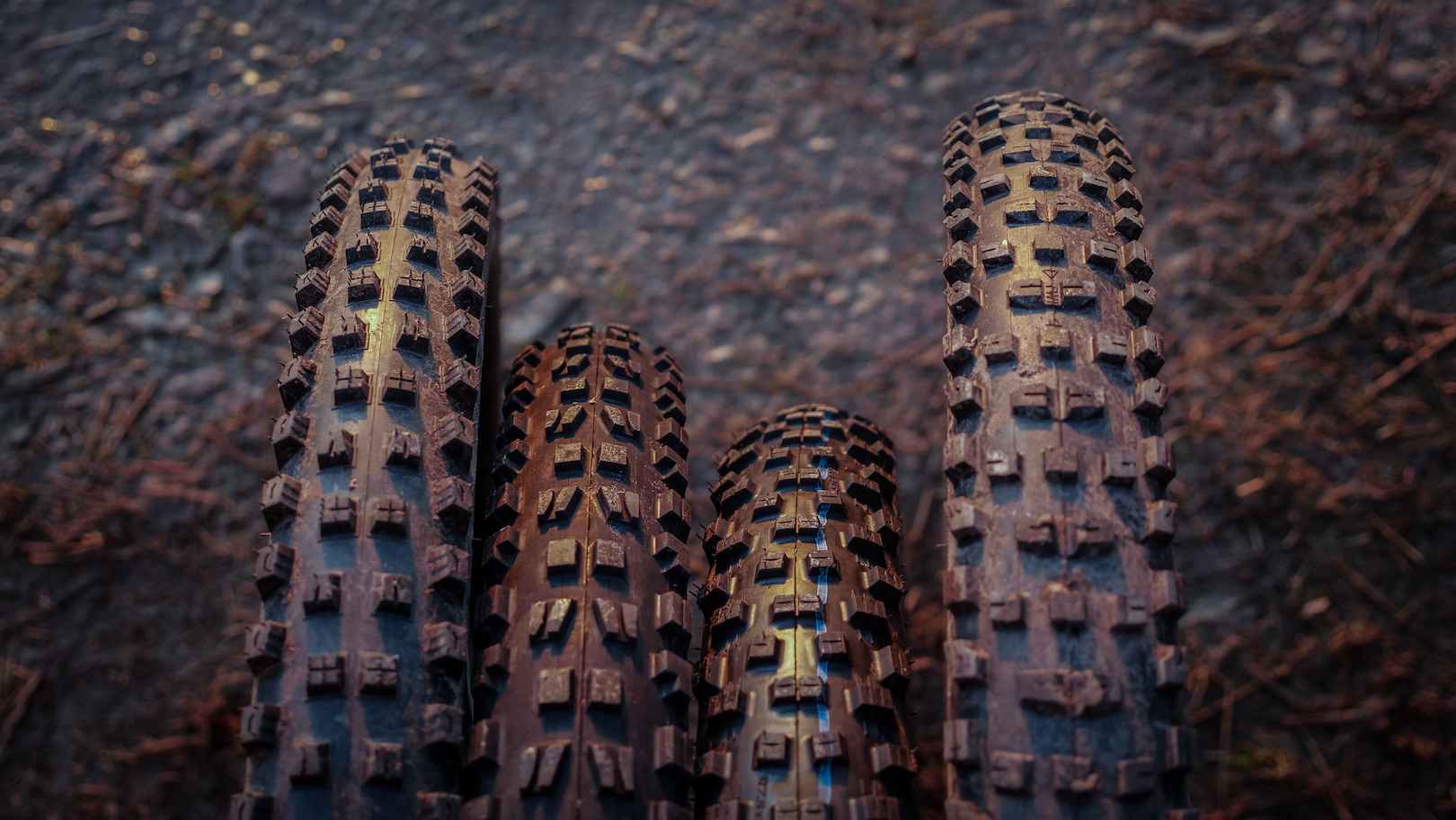
New 29×2.6in Options
In that group test we reviewed the 27.5×2.6in Maxxis Minion DHF tyre. Here we’ve got the 29in version, which will soon be available in three different flavours:
- Minion DHF, 60tpi Casing, Dual Compound EXO/TR – £49.99
- Minion DHF, 120tpi Casing, 3C MaxxTerra EXO/TR – £59.99
- Minion DHF, 120tpi Casing, 3C MaxxTerra EXO+/TR – £64.99
For those wanting more bite again, those three options will also be available in the Minion DHR II tread pattern (and if you’re wondering about how the Minion DHF and Minion DHR II compare to each other, check out our comparative review here).
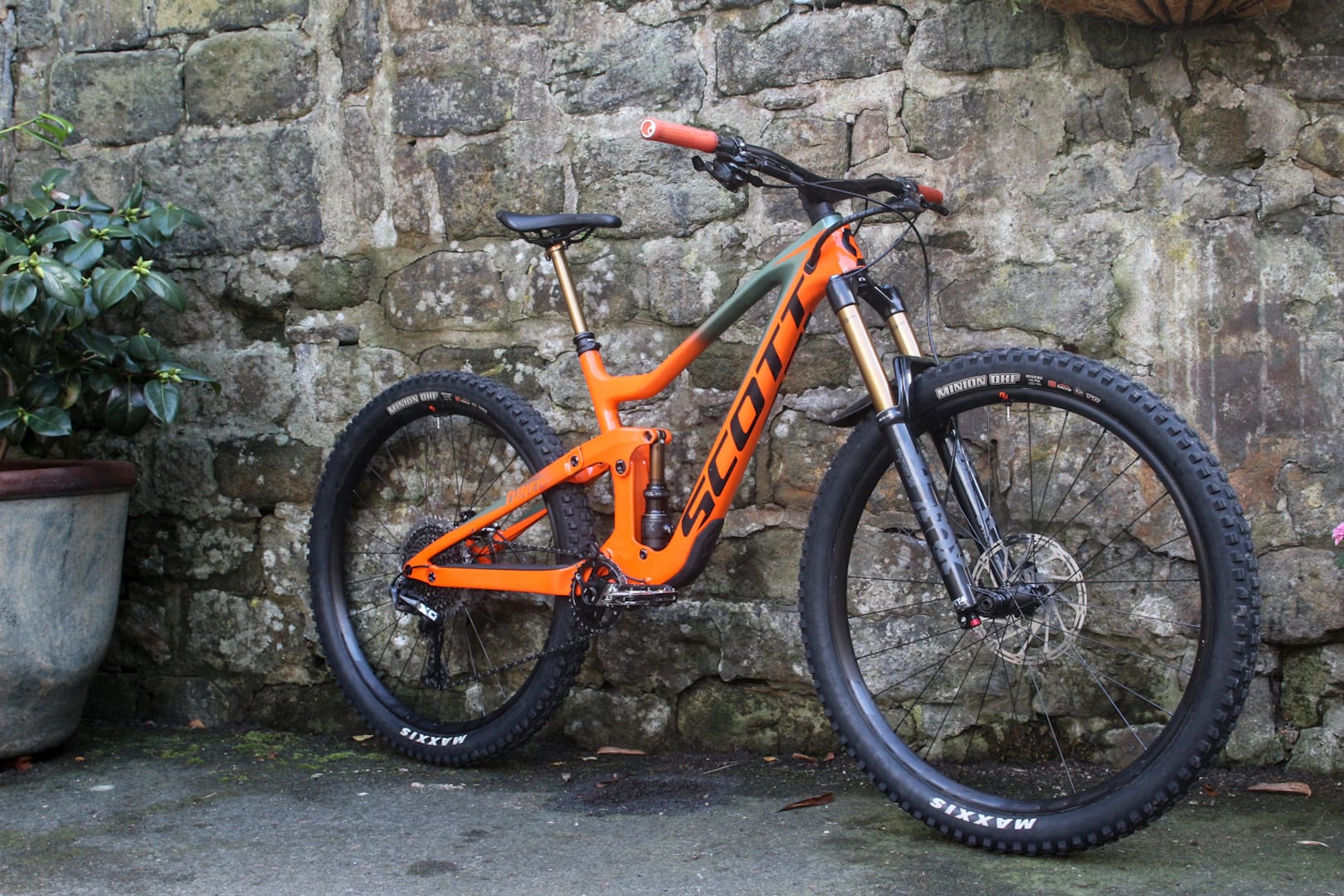
The tyre on review here is the middle option that features a 120tpi casing, 3C MaxxTerra rubber, and EXO reinforced sidewalls. Despite their lack of aftermarket availability, I’ve been riding a set for the past three months while fitted to a 2019 Scott Ransom 900 Tuned that we’ve just recently finished testing.
Maxxis Minion DHF 29×2.6in Tyre Features
- Designed for All Mountain, Enduro & Downhill
- Size: 29×2.6in (also available in 27.5in)
- 3C MaxxTerra Triple Rubber Compound
- 120tpi single-ply casing
- EXO reinforced sidewalls
- Also available in 27.5in diameter
- Claimed weight: 1015g
- RRP: £59.99
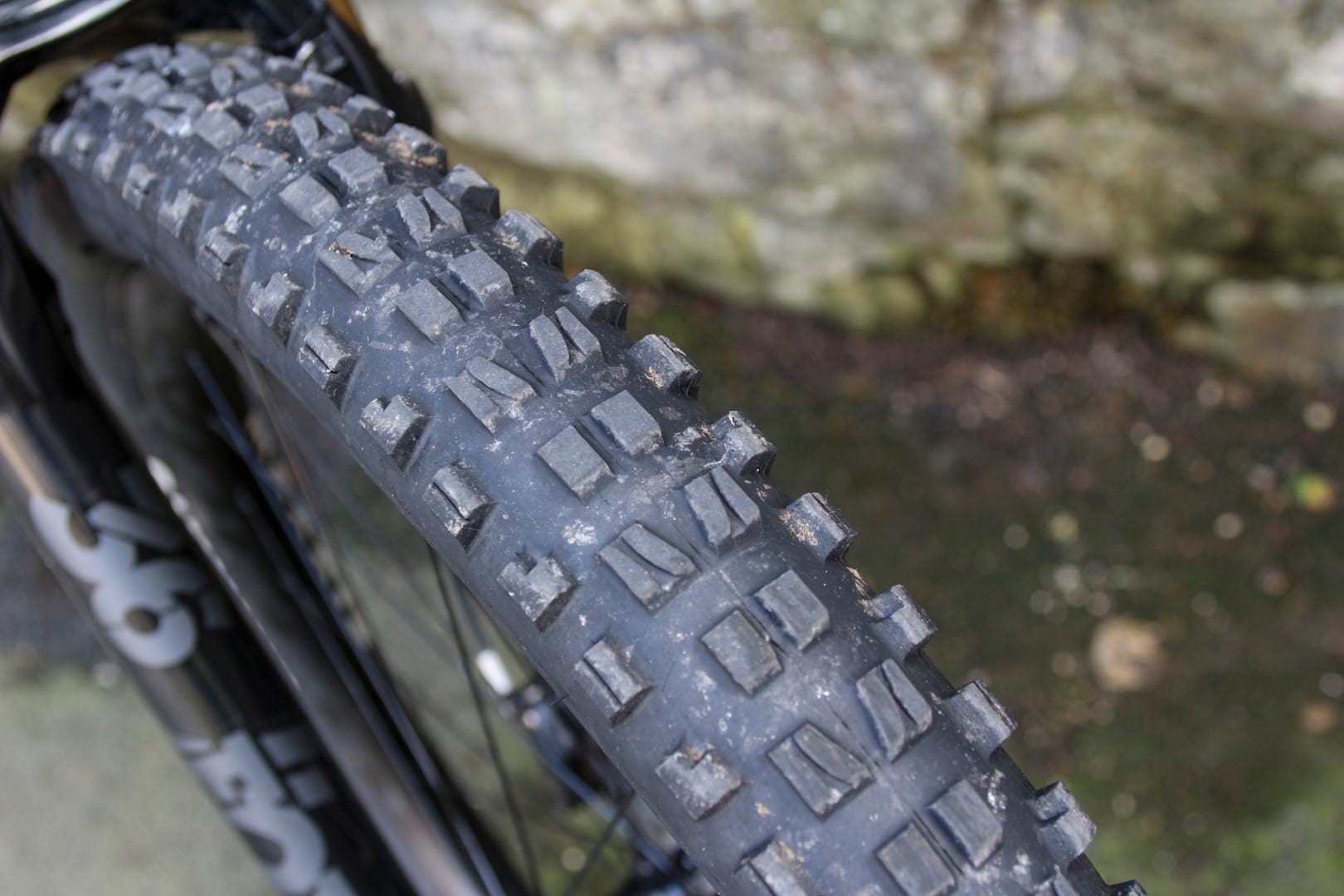
Installation Notes
Being stock equipment on the Scott Ransom, the 2.6in Minion DHFs came fitted to a set of Syncros Revelstoke 1.5 wheels that feature alloy rims with an internal width of 30mm. The rims come pre-taped from the factory, and the Minions set up tubeless easily with a floor pump. After a month of riding though, the beads had relaxed enough that the fit became a little looser. I was still able to air them up with a floor pump, but I had to scrape the dried residue sealant from the beads before I could establish a clean seal.
Both tyres came in near enough to the claimed weight at 1030g each. Perhaps surprisingly for a Maxxis tyre, they also came in at bob-on the claimed width, measuring 2.6in wide across the tread. I’d expect them to balloon a little further on a wider rim.
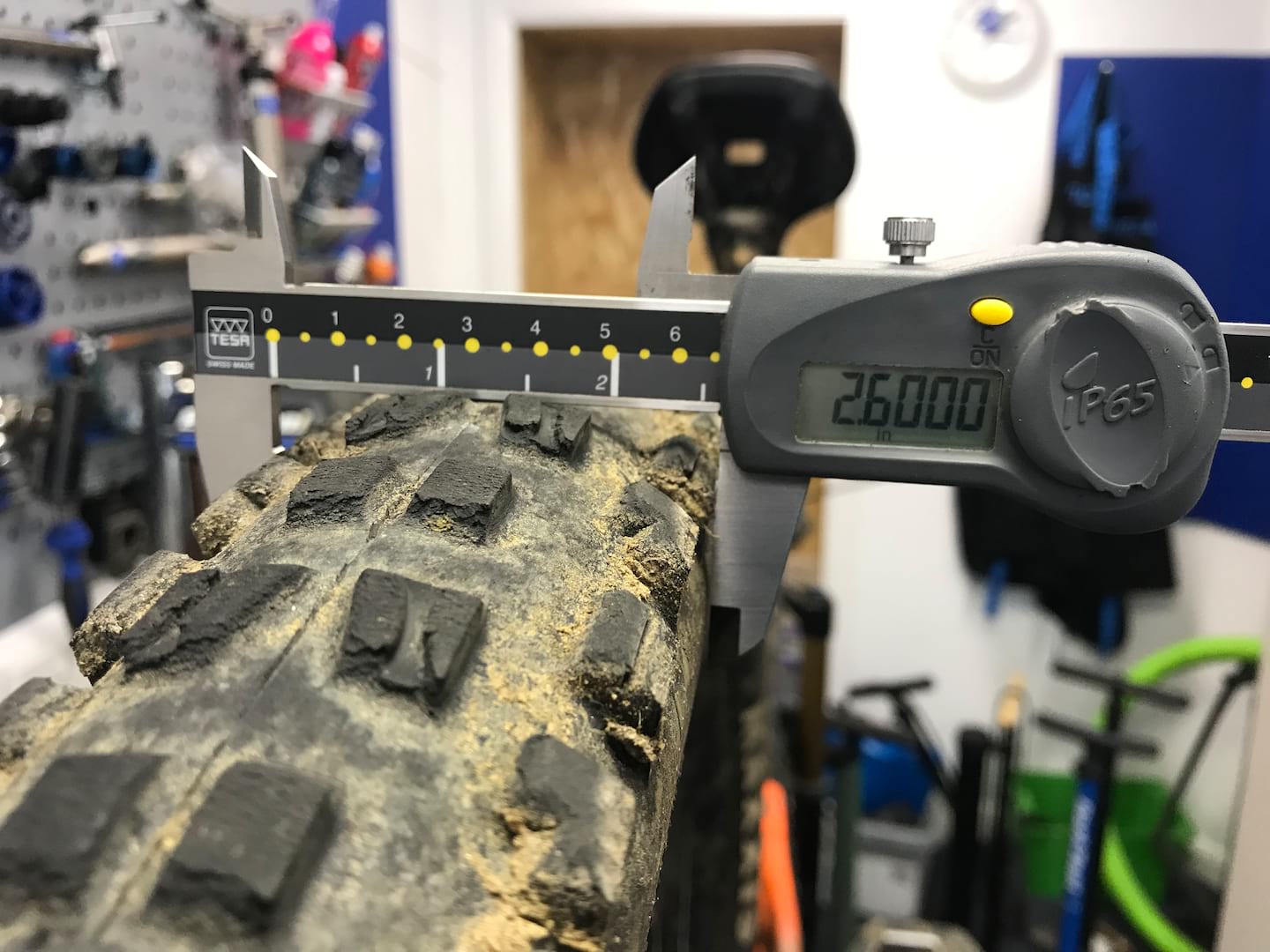
The 2019 Scott Ransom is actually meant to come spec’d with the slightly heavier EXO+ casing on the rear, but those weren’t quite production ready so I had the regular 120tpi EXO casing fitted front and rear on the Ransom. From a testing perspective, this did mean I was able to get a more thorough experience of the same tyre in two different applications.
Mounted up to the 170mm travel Ransom, the 2.6in Minion DHFs look properly tough. The jumbo-sized tyres have a very big volume, and that allows for decently low pressures – I had the front set at 16psi, and the rear set at 18psi.
That low rear tyre pressure was made possible by running a Vittoria tubeless tyre insert, which I fitted prior to departing for a few weeks riding around places like Lake Garda, Finale Ligure and the Sierra Nevada range. For those interested, you can check out our review of the Vittoria Air-Liner here.
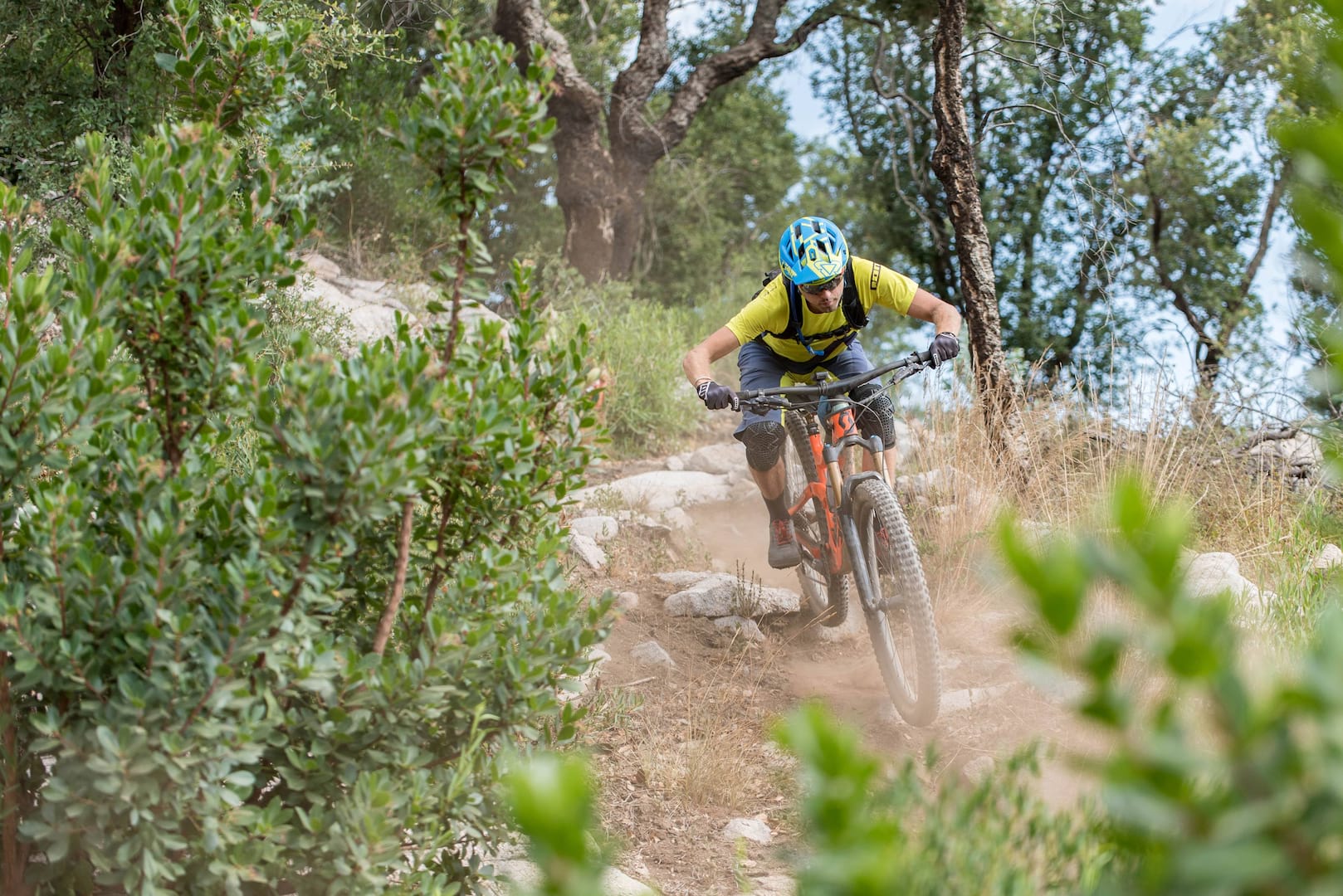
On The Trail
To be perfectly honest, there isn’t a lot that I can really say about the Minion DHF that hasn’t been said before. It’s been a popular tread pattern for many years now, and for good reason. It has exceptional cornering grip, relatively low rolling resistance for such an aggressive tyre, and fabulous predictability in dry, loose, and rocky conditions. It’s for these reasons why you’ll see so many copycats on the market from other tyre brands that have been ‘inspired‘ by the Minion DHF.
In the 29×2.6in size, the Minion DHF’s tread design is largely unchanged from the pattern we all know too well. Compared to the narrower sizes though, the tread is a little chunkier, and the spacing is a little more generous. The effect is a slight increase in rolling resistance, but an improvement in the Minion’s all-round capabilities. It clears mud better, and cornering in such conditions is surprisingly good.
However, those shallow, long and ramped centre tread blocks aren’t great for breaching through soft and muddy top layers, and both climbing and braking traction suffers as a result when riding muddy trails. I was reminded by this when I returned from my trip to a damp Calderdale Autumn, where the moist, leaf-littered trails caused confusion for the Minion. For riding muddier, more natural-type terrain, I’d still recommend a Minion DHR II or Shorty.
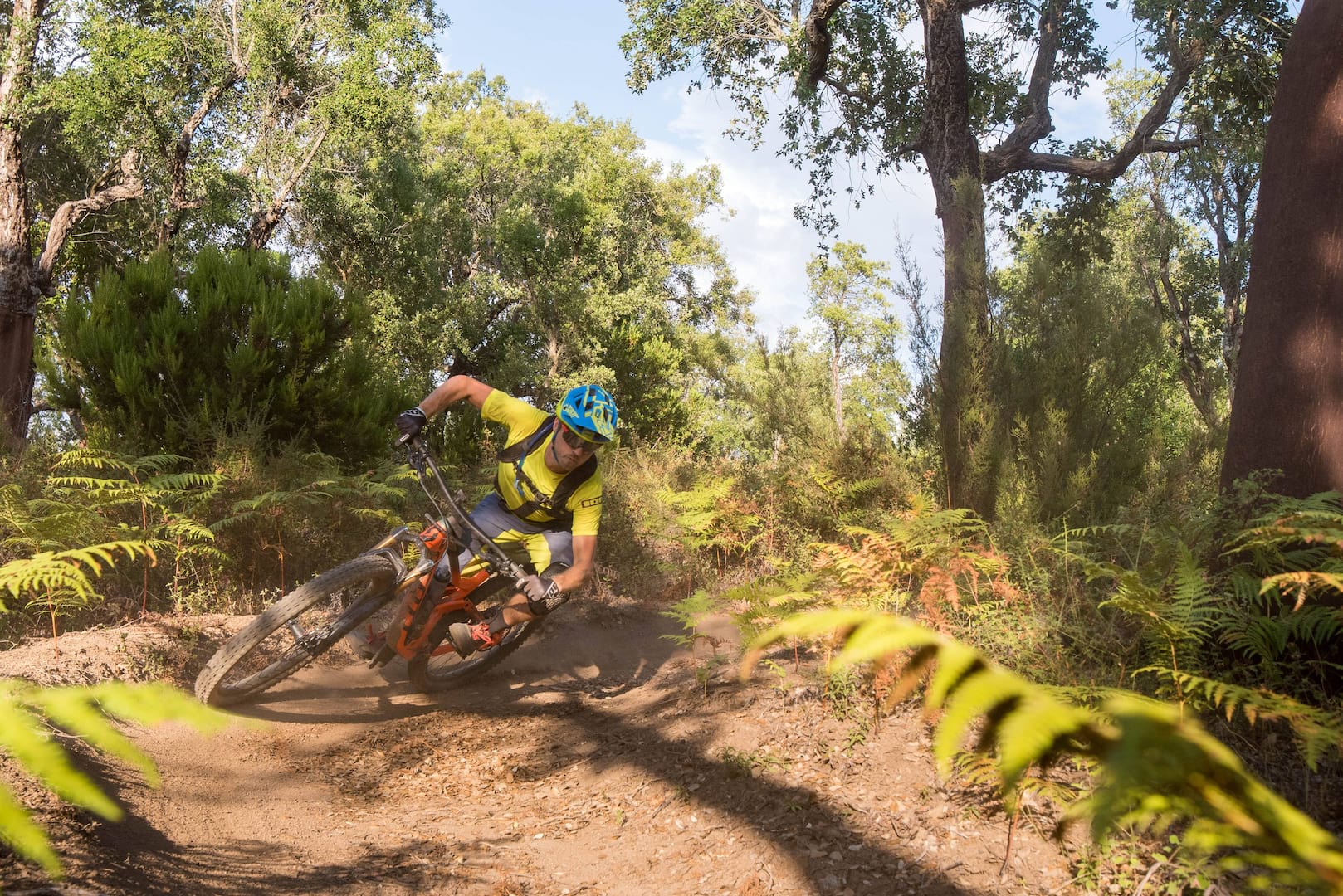
Most of my time aboard the Ransom was spent on much drier and rockier terrain on the Continent though, and here the Minions came into their own. Those same shallow tread blocks that struggle to bite in sloppy mud turn the tables to deliver gobs of stick on harder and drier singletrack – even if it’s a little loose and sandy. The high volume carcass helps to put a good deal of rubber onto the trail surface, and the supple 120tpi construction means the tyre will absorb rough trail textures with ease.
The Minion’s infamous cornering bite consistently kept me upright in scenarios where I probably should have been on the ground. I can only remember one occasion where I slid out, and that was when I punched into a pocket of thick, powdery dust. Aside from that one whoopsie, I was never left wanting for more traction. I could happily monster the wheels into the roughest of rock gardens, littered with loose and dusty rubble, and the Minions would reliably carry me through all the way to the exit.
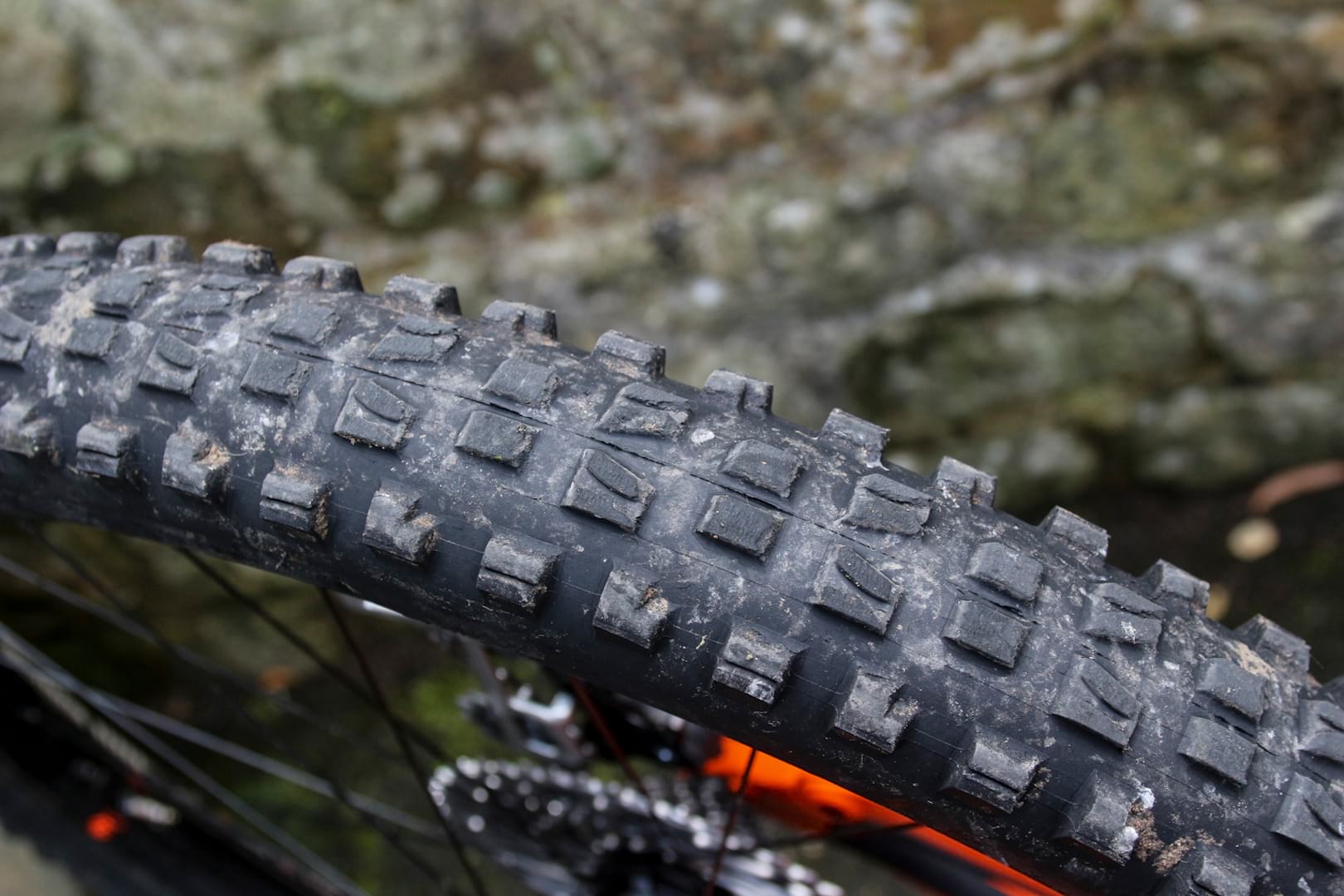
Durability
Having notched up about 1000km of riding, both tyres are still looking pretty good. The rear is definitely showing signs of wear though, with some degradation to the softer 42a shoulder blocks. There’s more life left in it though, and I’d say it probably has a few more hundred kms of wear left in it, depending on how bald you’re happy to let a tyre get.
Fortunately during my time on the Ransom, I managed to avoid any punctures or ride-ruining slashes to the sidewalls. I didn’t expect this given the locations I was riding, but it has to be said that the Vittoria Air-Liner did a fantastic job of supporting the rear tyre and preventing any pinch flats. Even with the lighter 120tpi casing, the rear tyre felt nice and solid.
Still, I am on the lighter side (70kg with gear), and so I’d recommend that heavier riders and those who are particularly hard on their tyres to consider the thicker 60tpi casing or the new EXO+ option.
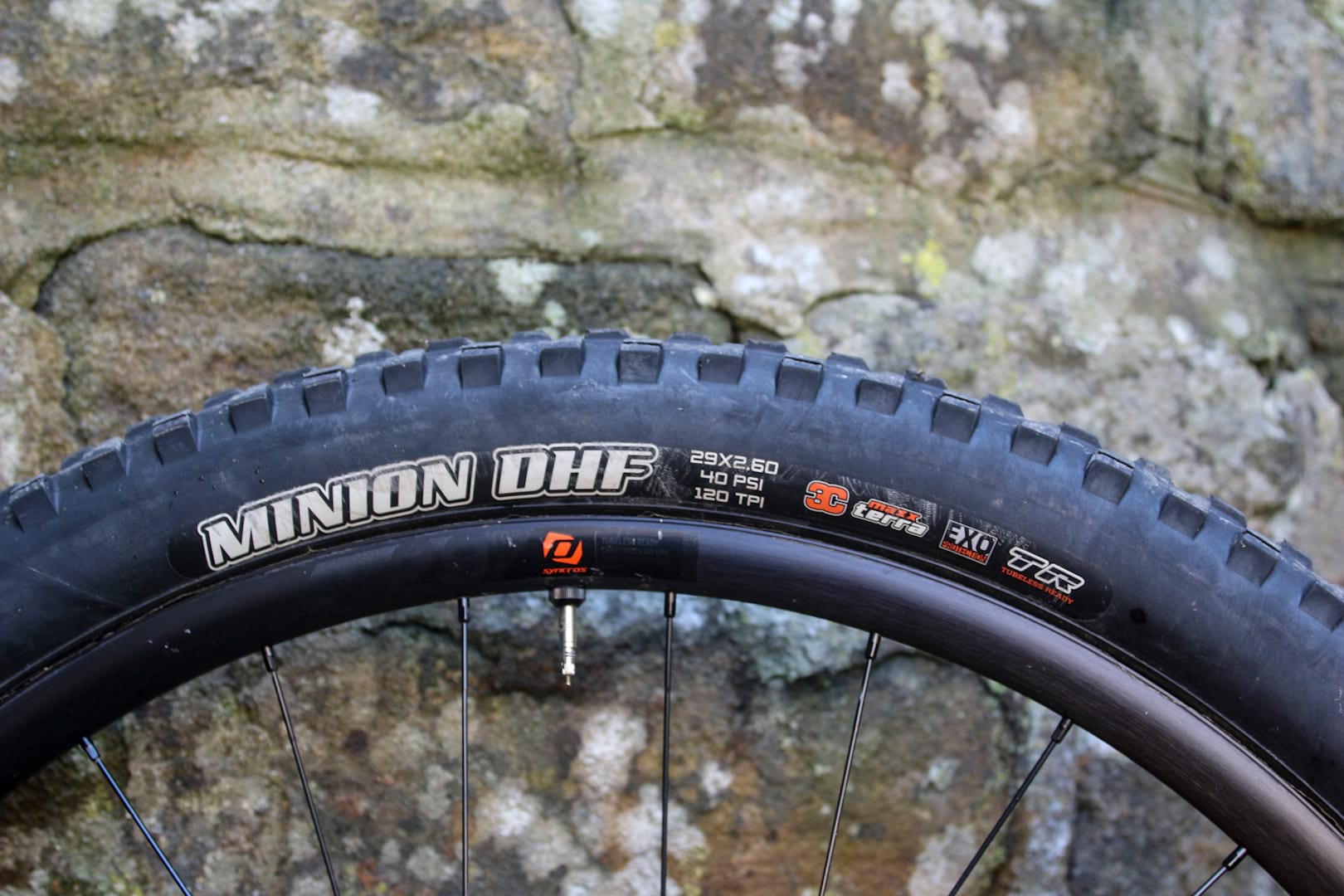
Overall
Having ridden the Minion DHF for many years now, I was expecting few surprises with the new 29×2.6in option. And I was delivered none. The Minion DHF continues to impress, and perhaps even more so in this new, high-volume ‘British-Plus’ width.
It’s a tyre that excels in loose and rocky conditions, making it ideal for year-round use on trail centre black and red runs, and an absolute winner in mountainous environments both in the UK and on the Continent.

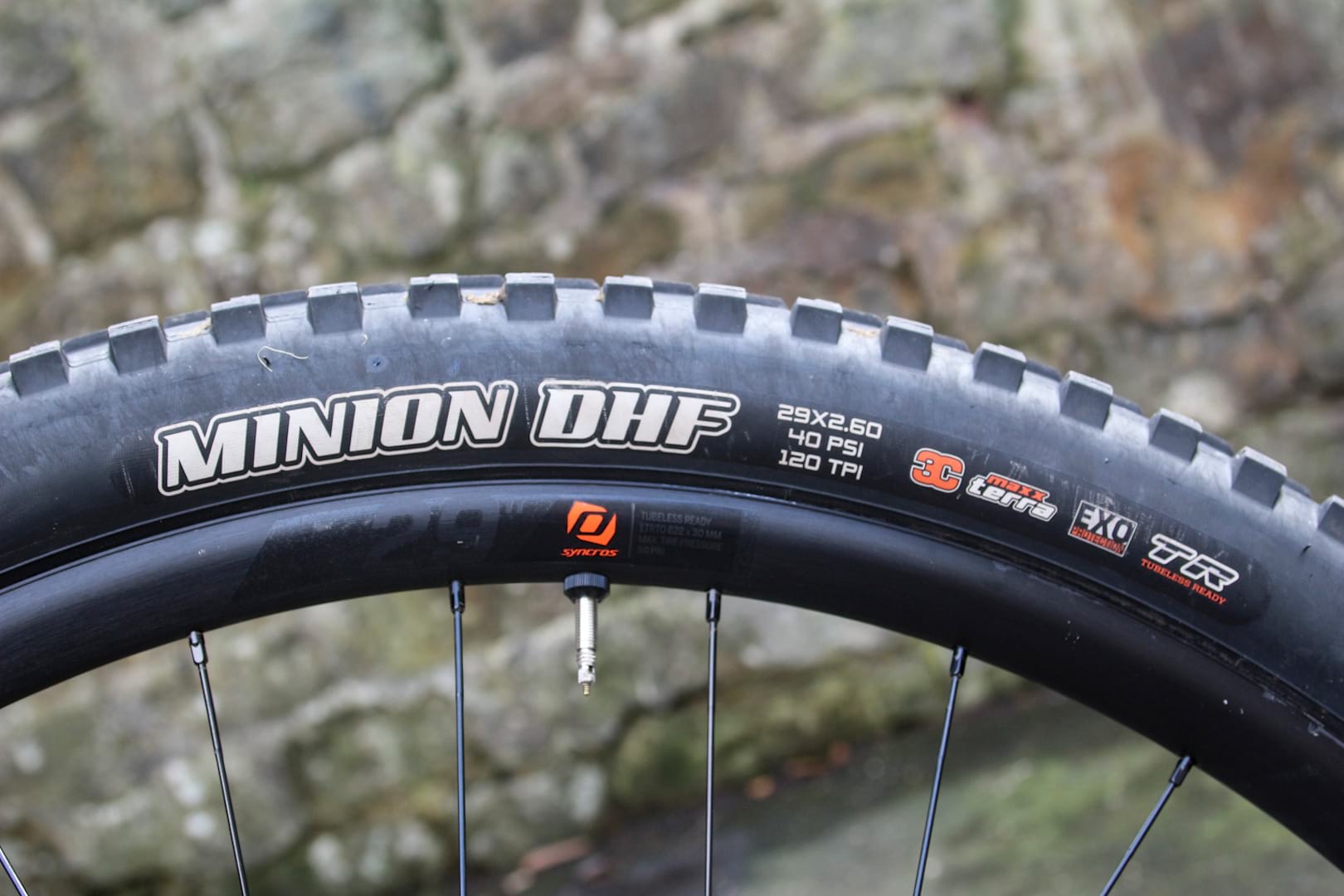




FFS Maxxis, I’ve only just bought the 2.5in version.
I have some of the 2.6 flavour ones as tested here for a few months now and they are ace, but like the 27.5 I would say if you’re riding somewhere rough/rocky I would stick with the 2.5s.
I’m looking to replace the 29 x 2.60 pre-Addix Nobby Nic’s on my ’17 Stumpy with a Minion DHF 29 x 2.50 WT (front) and Aggressor 29 x 2.50 WT (rear) for general trail riding and park use (on 29mm internal width rims). Now I’m wondering if I should wait until the 2.6 DHF is available. It looks like it is only 10 g heavier. benpinnick says “if you’re riding somewhere rough/rocky I would stick with the 2.5s” – why is that? What the advantages/disadvantages of the 2.60 over the 2.50? PS I can’t see any mention of the 2.60 being a WT version (mind you the Maxxis website doesn’t show the 2.50 as being WT but that’s what seems to be available).
Launching in January in the UK? Without a MaxxGrip option for the front?
@chakaping – I wouldn’t worry. We’ll probably have the 2.7in width on test when your current tyre wears out 🙂
@paulcd – The difference with a 2.5in Minion DHF is, well, 0.1in in width 🙂 I put the two side-by-side, and it’s very difficult to tell by eye. But there is a volume difference, and that will give you a more supple and compliant ride with the bigger bag 2.6in width.
I think what Ben Pinnick is referring to is tyre durability and pinch-flat resistance, which typically goes down as you upsize tyre volume without adding a lot more meat to the carcass. If you’re riding fast on choppy terrain with lots of sharp and aggressive rocks, then really you want the burliest tyres you can get – which usually means going for a narrower width and a more robust casing. I’d say it also depends on your weight and riding style though – a lighter and smoother rider can get away with a lighter carcass and potentially higher volume tyre.
In my case, I paired the 2.6in Minions with a Vittoria Air-Liner in the rear, and a Huck Norris-style insert in the front tyre. Meant I could still run very low pressures and get loads of compliance, while still having exceptional rim and pinch-flat protection that wouldn’t be possible even with a heavier duty tyre.
Hope that helps!
ST Wil.
Wil – thanks for the informative reply. I imagine I wouldn’t be able to tell the difference between the 2.50 and 2.60 anyway. I’m not particularly light or smooth (or fast for that matter) but given that I haven’t had any puncture issues with the 2.60 NN’s (running tubeless) I expect the DHR will be fine given it is a heavier tyre (so a stronger casing?). I’m conscious of the extra rotational mass I’ll be adding to the wheels (~200 g each) but as I’m not racing I guess I should just get over that.
@paulcd – My pleasure mate!
If you haven’t had any issues with punctures or stability with the 2.6in Nobby Nics, then you will 100% be ok with the 2.5in WT tyres you’ve listed (DHF front and Aggressor rear), or the 2.6in Minion DHF tyres I’ve tested here. I wouldn’t worry about going for a heavier casing (Double Down or EXO+) either. I reckon you’ll be a-ok with the lighter 120tpi or standard 60tpi casing.
FWIW; I really didn’t like the 29×2.6in Nobby Nics that came fitted to the Scott Genius 900 Tuned I tested this year. I found them to be really floaty in most conditions, with not nearly enough bite. They are light and they roll quick, but as you said, if you’re not racing then that’s less of a priority.
The swap to a set of Minion DHF tyres (2.5in WT or 2.6in) is going to give you a load more rough terrain traction and cornering confidence – you are going to love it!
ST Wil.